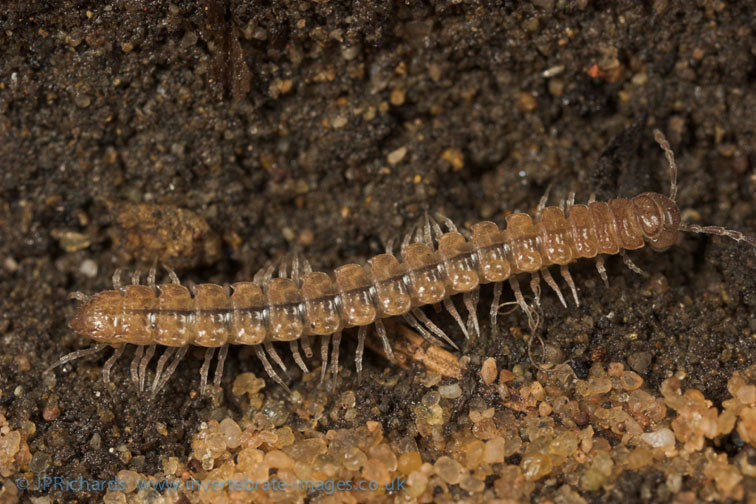Propolydesmus testaceus (C.L.Koch, 1847)
Synonyms
Status:
- GB IUCN status: Near Threatened
- GB rarity status: Nationally Rare
ID Difficulty
Identification
This species lacks the 'toothed' edge to the paranota typical of Polydesmus sppecies, such as Polydesmus angustus or Polydesmus coriaceus and often slightly pinkish in colour.
However, identification is best undertaken by examination of male gonopods or female epigynal structures.
Distribution
The first British record of this species was from Walton-on-the-Naze in Essex (Pocock, 1903). It has not been found in Essex since, nor in Cornwall where it was later noted (Turk, 1944). Most modern records are from Kent with other records from chalk downland in Oxfordshire (Gregory & Campbell, 1996), reclaimed industrial land and woodland in Monmouthshire (Harper, 2004) (and has subsequently proved to be widespread in south Wales) and woodland in Suffolk (Lee, 2005, pg.4). In 2017 it was recorded in pitfall traps in a public garden in Glasgow, Scotland (Davidson & Weddle, 2021).
Habitat
It has been recorded from a range of habitats but there are insufficient ecological data available for reliable conclusions to be drawn from any analysis of recording scheme data. Most European records are from open habitats but the species has also been found in caves and damp woodland and Kime (2004) considered it to be thermophilic with a preference for calcareous soils. This is in general agreement with the British data; most of the records are from relatively open habitats but there are records from caves and woodland and all are from base-rich soils. Propolydesmus testaceus has an extended Atlantic distribution from south west France to the Czech Republic and the species appears to reach the northern limits of its range in Britain and Germany (Kime, 2001). In contrast with its scarcity in Britain, Jeekel (2001) found the species to be common in the limestone area of Limburg in the Netherlands. Kime (2001) also reported collecting large numbers of specimens by pitfall trapping in Belgium and Luxemburg.
Phenology
In Britain adults have been collected in each month from April to July and again in October.
This updated species account is based on Lee (2006).
Links
MilliBase - Global catalogue of Millipedes: https://millibase.org/aphia.php?p=taxdetails&id=1025416







